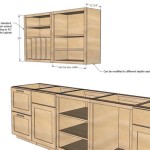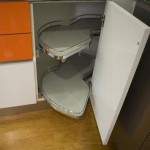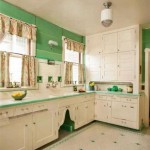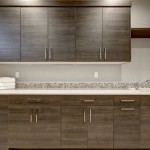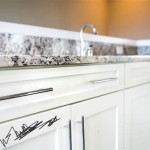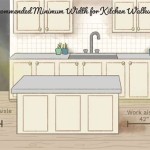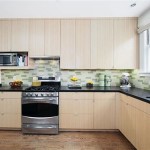Old Style Kitchen Cupboard Handles: A Guide to Selection and Authenticity
The selection of hardware for kitchen cabinetry is a crucial element in defining the overall aesthetic and functionality of the space. Among the various hardware options, old style kitchen cupboard handles hold a particular appeal, evoking a sense of history, craftsmanship, and timeless design. These handles, often inspired by periods such as the Victorian era, Edwardian era, or early 20th century, offer a way to introduce character and visual interest to both new and remodeled kitchens. Understanding the different styles, materials, and considerations involved in choosing old style kitchen cupboard handles is essential for achieving a cohesive and authentic design.
Identifying and Understanding Period Styles
The term "old style" encompasses a wide range of design aesthetics, each with distinct characteristics. Recognizing these period styles is the first step in selecting handles that complement the overall design of the kitchen. Common period styles represented in old style kitchen cupboard handles include:
Victorian (circa 1837-1901): Victorian styles are characterized by ornate detailing, intricate patterns, and the use of materials such as brass, bronze, and porcelain. Handles from this era often feature elaborate floral motifs, scrollwork, and embossed designs. The aesthetic is generally opulent and highly decorative.
Edwardian (circa 1901-1910): The Edwardian period saw a slight shift towards simpler designs compared to the Victorian era, though still retaining a sense of elegance and refinement. Handles from this period often feature cleaner lines, symmetrical shapes, and a greater emphasis on functionality. Materials such as polished brass, nickel, and wood were commonly used.
Arts and Crafts (circa 1880-1920): The Arts and Crafts movement emphasized handcrafted quality, natural materials, and simple, functional designs. Handles from this period typically feature clean, geometric shapes, hammered finishes, and a focus on the inherent beauty of the materials. Copper, wrought iron, and wood were commonly used.
Art Deco (circa 1920-1939): Art Deco designs are characterized by geometric shapes, streamlined forms, and the use of luxurious materials. Handles from this era often feature angular designs, stepped patterns, and materials such as chrome, Bakelite, and glass. The aesthetic is generally sleek and modern, yet with a strong sense of glamour.
Early 20th Century/Transitional: This broader category encompasses styles that blended elements from different periods, often incorporating simplified versions of Victorian or Edwardian designs. Handles from this period may feature a mix of materials and finishes, reflecting a transition towards more modern aesthetics.
Identifying the dominant style of the kitchen cabinets and overall decor will help narrow down the selection of appropriate handle styles. For example, a kitchen with Shaker-style cabinets might benefit from simple, understated handles inspired by the Arts and Crafts movement, while a more ornate Victorian-inspired kitchen would benefit from handles with elaborate detailing.
Materials and Finishes: Authenticity and Durability
The choice of materials and finishes plays a significant role in both the aesthetic appeal and the durability of old style kitchen cupboard handles. Authentic reproduction handles often utilize materials and finishes that were common during the period they represent. Common materials and finishes include:
Brass: Brass is a classic material for old style handles, offering a warm, golden tone and excellent durability. It can be finished in a variety of ways, including polished brass, antique brass, satin brass, and unlacquered brass. Unlacquered brass develops a natural patina over time, adding to its authentic character. However, it requires more maintenance to prevent tarnishing.
Bronze: Bronze is another durable and attractive material that was commonly used for old style handles. It has a darker, richer tone than brass and can be finished in a variety of ways, including oil-rubbed bronze, antique bronze, and statuary bronze. Oil-rubbed bronze is a popular choice for adding a rustic or aged look.
Nickel: Nickel is a bright, silvery metal that offers a clean and contemporary look while still maintaining a sense of period authenticity. It can be finished in polished nickel, satin nickel, or antique nickel. Satin nickel is a popular choice for its durability and resistance to fingerprints.
Cast Iron: Cast iron is a durable and rustic material that was commonly used in older homes and workshops. It offers a distinctive look and feel, and is often finished with a black or dark gray coating. Cast iron handles are particularly well-suited for kitchens with a farmhouse or industrial aesthetic.
Porcelain: Porcelain knobs and handles were popular in the Victorian and Edwardian eras, often featuring hand-painted designs or transferware patterns. Porcelain adds a touch of elegance and sophistication to kitchen cabinetry. It is important to choose high-quality porcelain that is resistant to chipping and cracking.
Wood: Wood handles offer a warm and natural look that complements a variety of kitchen styles. Common wood species include oak, maple, and walnut. Wood handles can be finished with a variety of stains and varnishes to match the cabinetry. They are often found in Arts and Crafts or farmhouse-style kitchens.
Glass: Glass knobs and handles, particularly pressed glass, were popular in the early 20th century. They add a touch of glamour and sparkle to kitchen cabinetry. Glass hardware should be handled with care to avoid breakage.
When selecting materials and finishes, it is important to consider the overall style of the kitchen, the color of the cabinets, and the level of maintenance required. Authentic reproduction handles may require more maintenance than modern hardware, but the added character and visual appeal are often worth the effort.
Key Considerations for Practicality and Installation
While aesthetic considerations are paramount, the practical aspects of old style kitchen cupboard handles must also be taken into account. Factors such as size, shape, and installation requirements can significantly impact the functionality and ease of use of the handles.
Size and Shape: The size and shape of the handles should be proportionate to the size of the cabinet doors and drawers. Handles that are too small may be difficult to grip, while handles that are too large may overwhelm the cabinets. Consider the overall style of the kitchen when choosing the shape of the handles. Simple, geometric shapes are well-suited for modern or minimalist designs, while more ornate shapes are appropriate for traditional or Victorian-inspired kitchens.
Grip and Comfort: The handles should be comfortable to grip and easy to use. Consider the thickness and curvature of the handles, as well as the amount of space between the handle and the cabinet door. Handles with sharp edges or uncomfortable grips should be avoided.
Placement: The placement of the handles on the cabinet doors and drawers can significantly impact the overall look of the kitchen. Handles should be placed consistently on all of the cabinets and drawers, and the placement should be visually balanced. The general rule of thumb is to place handles on cabinet doors near the stile (the vertical framing member) and centered on drawer fronts. However, personal preference and the specific design of the cabinets may influence the final placement.
Installation: The installation of old style kitchen cupboard handles may require special tools or techniques, particularly if the cabinets are old or have existing hardware. Ensure that the new handles are compatible with the existing mounting holes, or be prepared to drill new holes. When drilling new holes, it is important to use the correct size drill bit and to avoid damaging the cabinets. Consider consulting a professional installer if you are unsure about the installation process.
Durability and Maintenance: The handles should be durable and able to withstand daily use. Choose high-quality materials and finishes that are resistant to wear and tear. Consider the level of maintenance required for the chosen materials and finishes. Some materials, such as unlacquered brass, require regular polishing to prevent tarnishing, while others, such as satin nickel, are relatively low-maintenance.
Compatibility with Existing Hardware: If replacing existing hardware, consider the compatibility of the new handles with the existing hinges and other hardware. The handles should complement the other hardware in terms of style and finish. It is also important to ensure that the new handles do not interfere with the operation of the cabinet doors or drawers.
By carefully considering these practical factors, it is possible to select old style kitchen cupboard handles that are not only aesthetically pleasing but also functional and durable, contributing to a well-designed and user-friendly kitchen space.

Aged Broe Cabinet Handles Knobs Kitchen Antique Old

Old English Brass Kitchen Handles Knobs Satin Drawer Cup Pulls Solid Cabinet Cupboard Door Shaker Style

Victorian Cast Iron Cup Pull Handles Knobs Black Rustic

C126 Vintage Cabinet Handle House

Monmouth Aged Brass Cupboard Handles Kitchen Dresser New Zealand

Cabinet Handle As Ghglg Furniture Accessories

Cast Iron Old Forged Round Cupboard Knobs Cup Bin Pulls

60 Of Our Favorite Budget Friendly Cabinet Hardware Picks

190 Best Cupboard Handles Ideas Knobs

Vintage Style Ceramic Cabinet Handles Art Deco Drawer Knobs Blue Jay Décor
Related Posts


